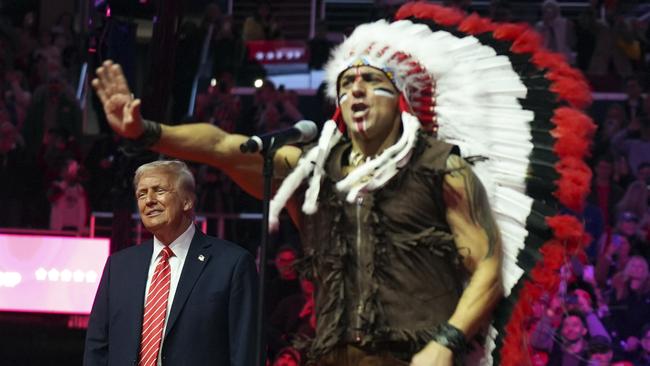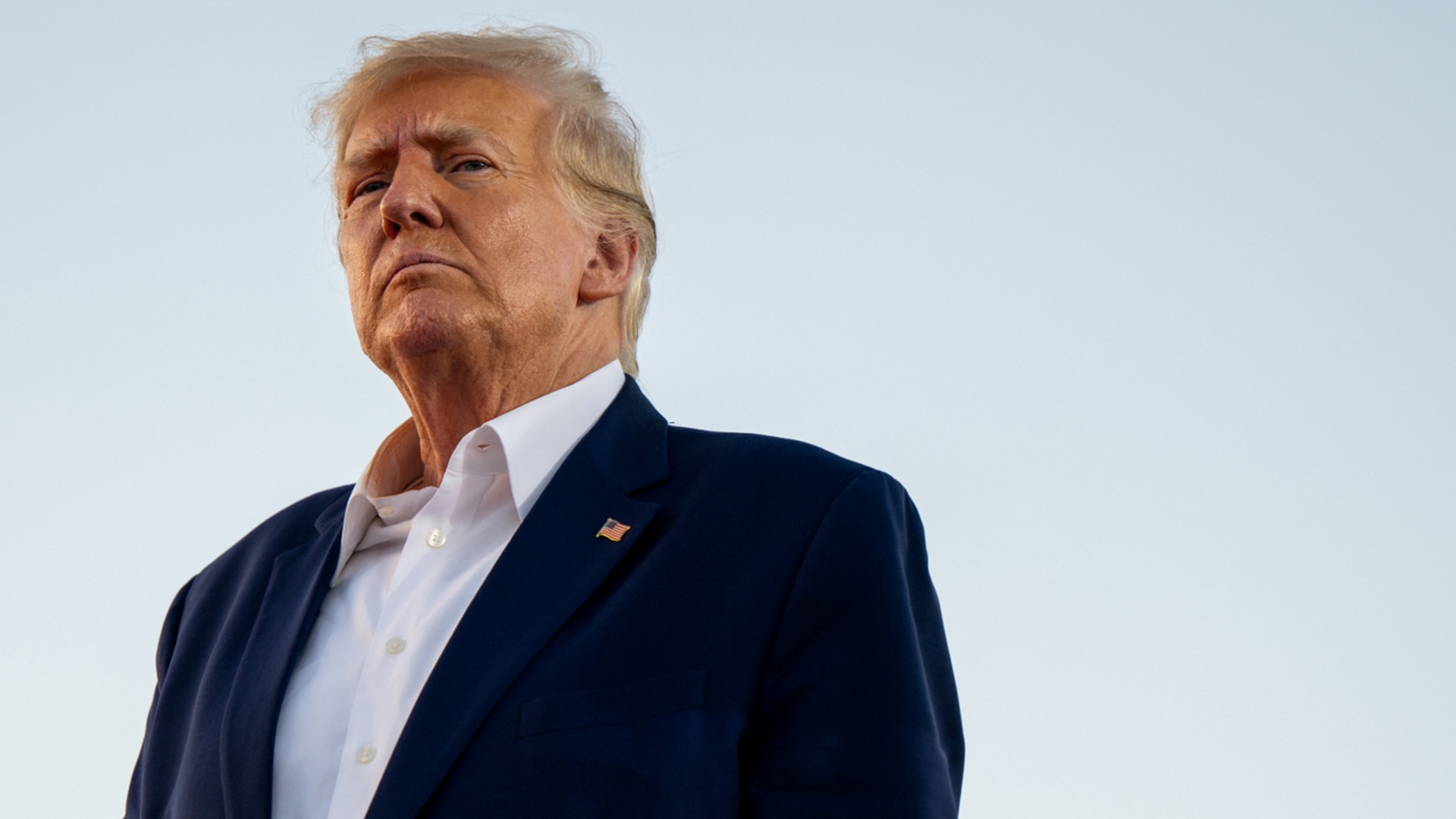Why China’s response to Donald Trump’s US trade policies matters
All eyes are on Donald Trump, and with the US closed on Monday for Martin Luther King Day, Australian markets will be among the first to react.

All eyes are on Donald Trump, and with the US closed on Monday for Martin Luther King Day, Australian markets will be among the first to react.
Analysts don’t expect anywhere near the extreme level of tariffs that Trump has been talking about. However, the Aussie dollar has fallen 11 per cent since the end of September and the Australian stockmarket has stalled amid uncertainty and anxiety about his policies.
The incoming President has called for a tariff of at least 60 per cent on China, 25 per cent on Mexico and Canada, and 10 to 20 per cent on all other US trading partners. Investors will initially measure his policy announcements against those objectives, potentially sparking sharp moves in the US dollar, stocks and bonds, which Australian markets will follow.
Stocks wobbled and the Aussie dollar hit a five-year low of US61.31c early last week, as strong US economic data added to worries that Trump’s policies would add to inflation. Those fears were calmed by lower than expected inflation data and a report that Trump’s team was considering a gradual approach to tariffs. Markets could go “risk-off” if Trump goes hard on trade or “risk-on” if his bite isn’t as bad as his bark. Stocks rose on Friday after Trump had a “very good” call with China’s President Xi Jinping on trade, TikTok and fentanyl.
It seemed a flimsy foundation for a rally in risk assets, as China looks set to be the main target of Trump’s trade policies.

The Wall Street Journal reported that Beijing is divided on whether it will be necessary to let its currency weaken in response to new tariffs from the incoming administration. But it was “medicine the leadership doesn’t want but might have to swallow”.
Based on the historical relationship between the Aussie dollar and Chinese currency, the dollar’s current level around US62c is probably consistent with a US dollar/yuan rate north of 7.5 yuan rather than the current 7.33, according to NAB.
“You could argue that there is scope for China to allow the currency to weaken at least modestly without having spillover effects back to the Australian dollar and the New Zealand dollar,” said NAB head of FX strategy, Ray Attrill. “But obviously if President Trump goes full bore, the risk is that we’re going to see the currency (US dollar/yuan) moving up, potentially, towards 8.0.
“In those circumstances, I think it’s almost inconceivable that the Aussie dollar wouldn’t weaken,” potentially below US60c.
But the outlook is complicated by the possibility that Trump’s team could view an excessive depreciation of the yuan as “currency manipulation” and react by increasing tariffs even more.
“China’s got to really think twice before it just blindly allows its currency to weaken, which is exactly what we did see in 2018 and 2019,” NAB’s Mr Attrill added.
In a Reuters interview last month, Trump’s senior counsellor for trade and manufacturing, Peter Navarro, said: “I don’t believe the Trump Treasury Department would welcome Chinese currency manipulation very fondly. The history of China as a currency manipulator is well-known.”
Further complicating the outlook for the Australian dollar and stocks, China may respond by increasing its plans for major policy stimulus at its Two Sessions meeting in March. China’s Central Economic Work Conference last month strongly hinted at greater policy support. Officials said monetary policy would shift to a “moderately loose” stance, from the previous “prudent” approach, and fiscal policy will become “more proactive”.
Large-scale fiscal stimulus from China could boost the outlook for iron ore prices and miners.
It could lift the Aussie dollar, particularly if the Reserve Bank saw less need to cut interest rates in the event of stronger iron ore prices. However, the net impact on the local stockmarket is hard to gauge. It could lead investors to switch from banks to miners.
Still, if Trump were to implement a 60 per cent tariff on Chinese goods, it could severely affect the outlook not just for China and the entire Asian region in the short to medium term. It could cause a significant one-off rise in US inflation, adding to the recent upward pressure on bond yields that has restrained the stockmarket and pressured the Aussie dollar since September.

It would lift US inflation by 0.7 percentage points and trim GDP growth by 0.2 per cent, according to the Petersen Institute.
But Trump’s team has called for a holistic approach. They say a comprehensive policy mix will rejuvenate US manufacturing, suppress inflation by slashing fossil energy costs, and elevate real wages through tax reductions and deregulation. Trump contends that steep tariffs will compel companies to rapidly relocate manufacturing back to US soil to dodge hefty duties.
“In the grand chessboard of global politics, Trump’s proposed tariffs – a staggering 60 per cent on Chinese imports and a blanket 10 per cent on imports from all other nations – seem less hypothetical and more like a looming reality, especially under his administration,” said SPI Asset Management.
“This move would mark a profound escalation from his first term when the average US tariff on Chinese goods rocketed from 3.1 per cent at his inauguration in 2018 to 19.3 per cent.”
In his view Trump’s tariffs will be designed not just as an economic lever but as a geopolitical tool aimed at penalising unfair trade practices and recalibrating trade balances with allies.
One possibility is a swift and sizeable hike in Chinese goods and targeted tariffs on selected products from other countries.
That might avert a full-blown global trade war while focusing intensely on China, mitigating broader inflationary effects.
Another possibility is a 60 per cent tariff on China, but exempting specific product categories to use as a bargaining chip in negotiations.
“This manoeuvre would fulfil campaign promises while preserving some negotiating leverage,” Mr Innes said.
“Trump’s energy policies, which align with his broader economic strategies, could offset some inflationary pressures by lowering crude oil prices.
“A stronger dollar could act as a buffer.”
Trump’s inauguration speech was due to kick off around 4am AEDT on Tuesday.







To join the conversation, please log in. Don't have an account? Register
Join the conversation, you are commenting as Logout